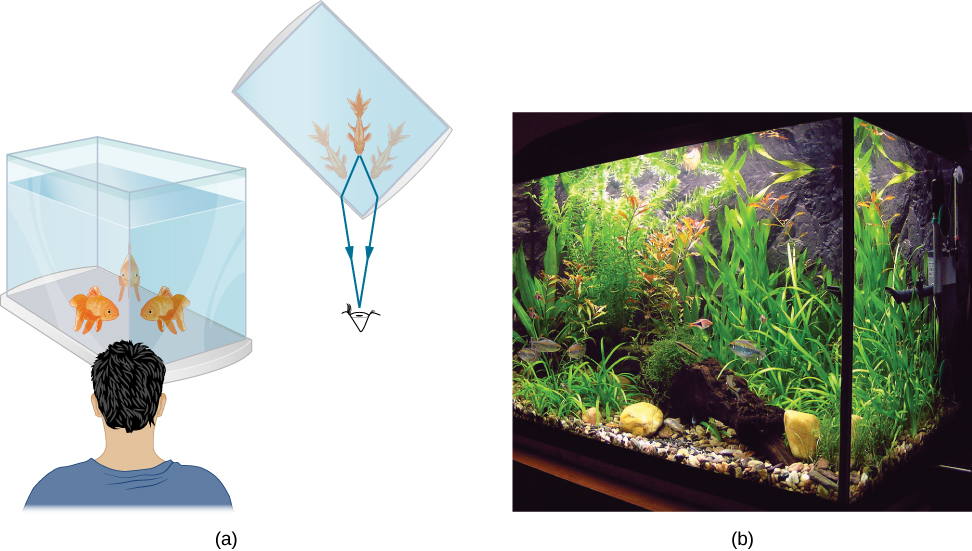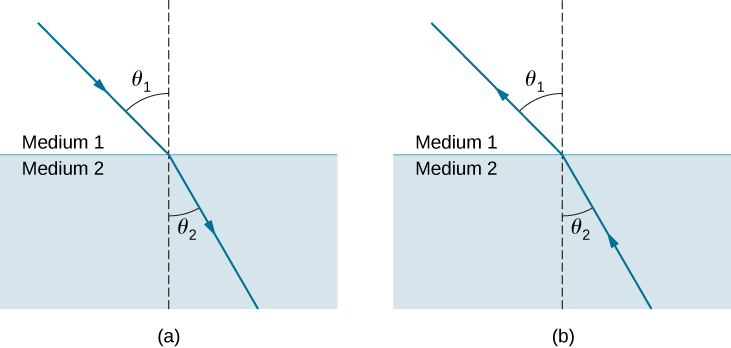| << Chapter < Page | Chapter >> Page > |
You may often notice some odd things when looking into a fish tank. For example, you may see the same fish appearing to be in two different places ( [link] ). This happens because light coming from the fish to you changes direction when it leaves the tank, and in this case, it can travel two different paths to get to your eyes. The changing of a light ray’s direction (loosely called bending) when it passes through substances of different refractive indices is called refraction and is related to changes in the speed of light, . Refraction is responsible for a tremendous range of optical phenomena, from the action of lenses to data transmission through optical fibers.

[link] shows how a ray of light changes direction when it passes from one medium to another. As before, the angles are measured relative to a perpendicular to the surface at the point where the light ray crosses it. (Some of the incident light is reflected from the surface, but for now we concentrate on the light that is transmitted.) The change in direction of the light ray depends on the relative values of the indices of refraction ( The Propagation of Light ) of the two media involved. In the situations shown, medium 2 has a greater index of refraction than medium 1. Note that as shown in [link] (a), the direction of the ray moves closer to the perpendicular when it progresses from a medium with a lower index of refraction to one with a higher index of refraction. Conversely, as shown in [link] (b), the direction of the ray moves away from the perpendicular when it progresses from a medium with a higher index of refraction to one with a lower index of refraction. The path is exactly reversible.

The amount that a light ray changes its direction depends both on the incident angle and the amount that the speed changes. For a ray at a given incident angle, a large change in speed causes a large change in direction and thus a large change in angle. The exact mathematical relationship is the law of refraction , or Snell’s law , after the Dutch mathematician Willebrord Snell (1591–1626), who discovered it in 1621. The law of refraction is stated in equation form as

Notification Switch
Would you like to follow the 'University physics volume 3' conversation and receive update notifications?